Cargando...
Recursos educativos
-
Nivel educativo
-
Competencias
-
Tipología
-
Idioma
-
Tipo de medio
-
Tipo de actividad
-
Destinatarios
-
Tipo de audiencia
-
Creador
Lo más buscado
- Carnaval
- imágenes lengua
- Dictados para ortografía
- Desarrollo de habilidades
- Descargar ejercicios de ingles
- Experimentos de acústica
- Actividades de lógica
- Proyectos escolares de fisica
- Lagos de Europa
- Repaso de lengua castellana
- Juegos geográficos
- juegos educativos
- Actividades cuerpo humano
- Música electrónica
- Comunidades autónomas
-
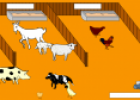
Escaped animals
TESiboard Organización
- 2403 visitas
In this activity we need to choose a criteria for sorting the animals into 2 sets. We drag the animals and sort them by colour, age, number of legs, etc.
-

Amphibians and reptiles
EduBook Organización
- 3646 visitas
Amphibians Amphibians are vertebrates that live part of their lives in fresh water and part on land. Characteristics of amphibians The skin of amphibians is moist and slimy. It has no protective…
-

Worms and molluscs
EduBook Organización
- 3132 visitas
Worms Worms are animals with long, soft bodies and moist skin. They do not have legs; they move by wriggling. Most worms live in the sea or in fresh water. Some live on land, like earthworms. Some worms…
-

-
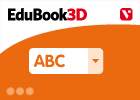
Final self-evaluation 10.07 - The Animal Kingdom (I). Invertebrates
EduBook Organización
- 4673 visitas
Are the following sentences true or false? Arthropods are invertebrates. Arthropods have bodies divided into antennae, head and abdomen. Arachnids are arthropods with six legs. Centipedes are myriapods.…
-
Answer true or false
EduBook Organización
- 4674 visitas
Answer true or false: Bones are the soft parts of the human body. The skeleton is made up of all the bones in our body. Our senses help us interact with the world around us. The legs are the upper…
-

Self-evaluation 5 - Prehistory
EduBook Organización
- 3153 visitas
Choose the best answer to each question: What are the advantages of walking upright on two legs? What was the consequence of a larger cranium? What was the result of hominids having their hands free?…
-
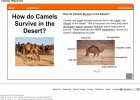
How do camels survive in the desert?
Tiching explorer Organización
- 5533 visitas
This lesson presents the special physical features camels have developed to adapt to the desert: how they store water and fat, their thick fur, long eyelashes and long legs... We can learn some…
-
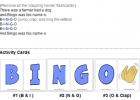
Song: Bingo
Tiching explorer Organización
- 2784 visitas
Activity designed to help us recognize alphabet letters and develop rhythm. It contains a song (MP3 file) and flashcards (PDF files) to use as visual aids. We practice vocabulary related to actions…
-

Look and answer. Arm and leg bones
EduBook Organización
- 2174 visitas
Look at the picture and answer the questions: Where are the clavicle and the scapula? What is their function? Which bones form the pelvis? Find the bones in our arms which perform a similar function to…
Te estamos redirigiendo a la ficha del libro...












